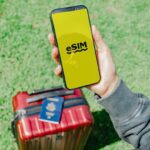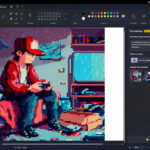A Franco-Quebec team has provided the first evidence of a hypothetical type of planet that might even be habitable. Discovered in 2017, the exoplanet LHS 1140 b, located 48 light-years away in the constellation Cetus, has intrigued scientists due to its size, mass, and proximity to its star.
Initially, researchers couldn’t categorize it as either a super-Earth or a mini-Neptune. With a size 1.7 times that of Earth and 5.6 times its mass, the planet’s density suggested it couldn’t be purely rocky. The two main hypotheses were that it either had a thick hydrogen-helium atmosphere like the giant planets in our solar system or consisted largely of water.
Deciphering the Mystery with JWST
Recent observations with the James Webb Space Telescope (JWST) have helped the team narrow down these possibilities. Using the Niriss instrument, they found no evidence of a hydrogen-helium atmosphere, a finding confirmed by independent observations with the NIRSpec instrument. This led the researchers to conclude that LHS 1140 b is likely an « ocean world, » a planet type theorized but never confirmed until now. The planet could be composed of 10 to 20% water, far surpassing Earth’s 0.02%.
Potential for Habitability
The planet’s habitability depends on its temperature. Since LHS 1140 b is in the habitable zone of its star, it could potentially have liquid water if it has an atmosphere creating sufficient greenhouse effects. Given its possible tidally locked state, one side could host a liquid ocean, while the other remains icy, similar to Saturn’s moon Enceladus, which has a subsurface ocean.
Future Research Directions
Despite being in the habitable zone of a red dwarf star, known for its variability, LHS 1140 b might still retain an atmosphere. Preliminary observations hint at an atmosphere dominated by nitrogen, akin to Earth’s, but more research with JWST is needed to confirm this. The presence of an atmosphere is crucial for habitability, making LHS 1140 b a prime candidate in the ongoing search for life beyond our solar system.






